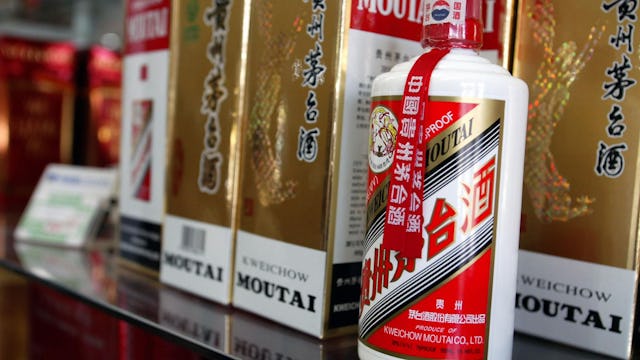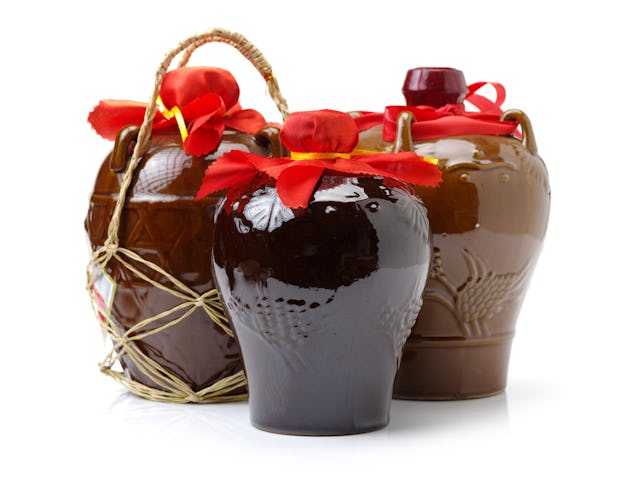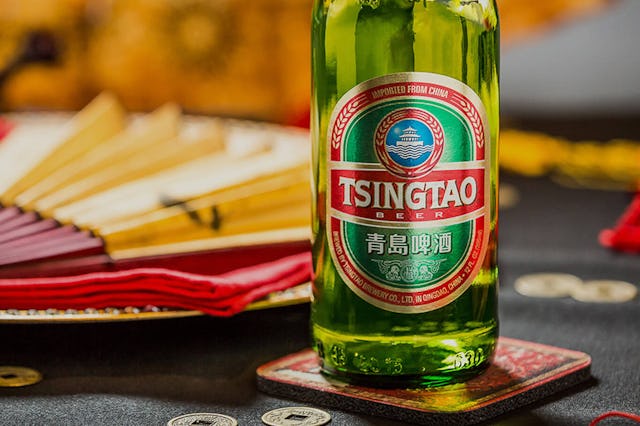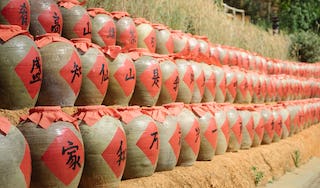China is famous worldwide for tea. It was originally a medicine, and then slowly entered everyday life as a relaxing drink. It is one of the first things the Chinese offer to guests.
But during Chinese New Year, you’ll be drinking a lot more of something else: alcohol. The wine culture in China is just as long and just as important as tea. Perhaps even more so.
Significance of Wine in China
Alcohol was discovered in China a couple thousand years ago. As an agrarian society, the first alcoholic drinks were made from fermented grain. Later, fruits and berries, flower petals and milk were all used as ingredients.
Depending on the quality of harvests, the ancient government set different restrictions on alcohol production. Some years, it was banned entirely. Usually, breweries were all government-owned.
In traditional Chinese medicine, wine was often used. It’s also known as 百药之长 (bǎi yào zhī zhǎng), meaning alcohol is the leader of all medicine. Many prescriptions have scientifically proven benefits and are still used today. Other potions sound like things from fantasy stories. Ingredients included snake gall, scorpions and more.
But alcohol is mostly used for socializing. What’s better than drinking with friends? More than that, wine is used in practically every ceremony or event. Wine must be offered to ancestors and gods. You must drink with your new in-laws during a wedding. And you must have alcohol during holidays.
Wine and Drinks in Festivals
“Alcohol” (酒 / jiǔ) is a homophone of “long-lasting” (久). During festivals, people will drink to everlasting friendships, happiness and other wishes.
And we all know how good alcohol can make you feel (if you can hold your liquor). So it’s really no surprise that alcohol is a staple in Chinese celebrations. There are even different drinks designated for the different holidays.
During the Dragon Boat Festival (端午节 / duān wǔ jiē), you should drink sweet sedge wine. For the Double Nine Festival(重阳节 / zhòng yáng jiē), chrysanthemum wine is the drink. As for the Spring Festival, you should drink niánjiǔ (年酒). Literally translated, it means “year alcohol.”
Spring Festival Wine and Drinks
The most important meal of the year is the New Year’s Eve reunion dinner. You may not have dumplings, fish or hot pot, but every household will have wine on the table.
There’s no enforced drinking age in China. Everyone in the family will at least take a sip on that night. Not only is it an enjoyable drink, it’s believed that the alcohol can protect from bad luck as well.
The Chinese will drink during dinner. And after, they’ll continue drinking as they wait for midnight to come. Then when they pay New Year visits or have guests come over, alcohol is brought out again.
But despite (or due to) the importance of nianjiu, there isn’t a specific type. Each household can have their own unique alcoholic beverage that they drink yearly.
White Wine 白酒 (báijiǔ)
The most common alcohol is Chinese white wine, or baijiu. The name comes from its clear color. Because it is usually made from fermented sorghum, it is also known as white sorghum wine. Wheat, barley and glutinous rice are among the alternatives.
Although similar to other East Asian drinks, baijiu is much stronger and more similar to vodka. You’ll find baijiu sold in glass or ceramic bottles. And just like vodka, shot glasses are used for drinking.

There are both flavored and unflavored baijiu. A popular unflavored drink is èr guō tóu (二锅头). The most well-known flavored baijiu is probably Moutai (茅台 / máo tái). There are also two types of baijiu that play a significant role in Chinese New Year celebrations.
Tusu wine (屠苏酒 / tú sū jiǔ)
Tusu wine, a type of baijiu, was the nianjiu in ancient times. The name comes from the tusu style building it was created in. It’s also called suìjiǔ (岁酒), “sui” being a synonym of “nian.”

The story goes that every year, a man would give his neighbors a bag of the medicinal ingredients. He told them to soak it in water and drink it on New Year’s Day. They found that the “water” protected them from the plague.
What’s significant about tusu wine is the drinking order. According to Chinese customs, the eldest of the family must give their blessings and drink first. But with tusu wine, it’s the opposite. Children are allowed to go first.
According to a scholar from the Jin Dynasty (265-420), children grow one year older during the Spring Festival. It is something to celebrate. But there’s nothing celebrating about seniors losing one year!
Jiao wine (椒酒 / jiāo jiǔ)
Jiao wine adds flowers of Sichuan peppers and cypress tree leaves to baijiu. Like tusu, children are the first to drink jiao wine.
The beverage symbolizes peace, health and longevity. It is used as an offering to the ancestors. Parents also use jiao wine to give New Year blessings.
Drinking customs and etiquette
Do you know how to say “cheers” in Chinese? Gàn bēi (干杯)!
But there is more to Chinese toasts than that. There are also more rules than just the aforementioned drinking order. Toasting goes in order of rank and/or age. For extremely formal dinners, there’s even an emcee so everything can run smoothly.
When toasting, you should hold the glass with your right hand and support it with your left. While clinking glasses with someone higher than you in either aspect, make sure your glass is lower. If you’re sitting too far away, raise the glass and tap it against the side of the table.
Even if you become slightly tipsy, you still need to pay attention to politeness and respect.
Drinking Games
But when you drink with friends, you can definitely have fun! Chinese drinking games are separated into two: sophisticated and common.
Sophisticated games (雅令 / yǎ lìng)
Also known as word games (文字令 / wén zì lìng), these were loved by the nobles of ancient times. Basically, they would gather around and create poetry or tell riddles. If someone couldn’t answer or come up with a line, they would drink as punishment.
Other times, wine was the reward. Emperor Wu of the Han Dynasty would order his officials to create poems. Each one must come up with a line containing seven words and each line had to rhyme. Otherwise, they wouldn’t even be allowed a seat for the banquet. Many classic poems were written in this manner! You can have a try at these literary games too.
Common games (俗令 / sú lìng)
The “common” games are more lighthearted, but they get intense with drunken competitive folks. The most popular are hand gesture guessing games, such as “rock, paper, scissors” (it’s debated whether the game originated from China or Japan).
Usually, the Chinese would play something called huá quán (划拳). You can either put out a fist or a certain number of fingers. Who loses depends on the rules, which you can create yourself. For some, you must call out the number as you put out your hand. If you’re right, then you win. For others, you have to try for an auspicious number (usually 6 or 8) and say a blessing to go along with it.
You can also have a mini tournament. Choose the best drinker out of your group as the king. He drinks first to announce the opening. Those who wish to challenge him will drink with him and then play the finger guessing game. If the challenger wins, he takes the place as king. Dice guessing games, silent games, card games, spin-the-bottle, truth or dare and more are played as well.
Other Beverages
Rice wine, red wine and foreign drinks are popular in China. For beer, you can always count on Tsingtao beer.

The country also contains 56 ethnicities, many of which are famous for drinking alcohol. Inner Mongolians love horse milk wine. Butter tea (酥油茶 / sū yóu chá), derived from milk, is commonly seen in Tibet. After dinner, try a bowl of Xinjiang yoghurt (新疆酸奶 / xīn jiāng suān nǎi) to aid with digestion (and make room for dessert).
The Yao ethnicity has a tradition of drinking New Year celebration wine (贺年酒 / he nián jiǔ). In the last lunar month, every household gives 1 kilogram of grains to the leader of the community to make wine. Couples who gave birth in the past year will bring their baby, as well as wine, tofu and pork around the community to give blessings.
What About Tea?
China is the top producer of tea and has influenced the tea culture worldwide. But you won’t see it as often during the Spring Festival. To brew and drink tea the traditional way, you must settle down and enjoy it. It’s not very suitable for revelries.
However, after New Year’s Day, you must start visiting your friends and neighbors. At this time, people will bring out their tea to treat their guests. In the lull between celebrations, you can rest with tea as well.
To lower cholesterol and aid in digestion after the feasts, try Pu’er tea (普洱茶 / pǔ ěr chá). Green tea (绿茶 / lǜ chá) and oolong tea (乌龙茶 / wū lóng chá) are great after eating greasy and oily food. And guess what? Tea is great for hangovers!
Other than drinks, Chinese New Year also offers a rich food culture. There’s great meaning behind the various dishes, desserts and snacks. Everything works together to express people’s wishes and blessings for the new spring and new year.
